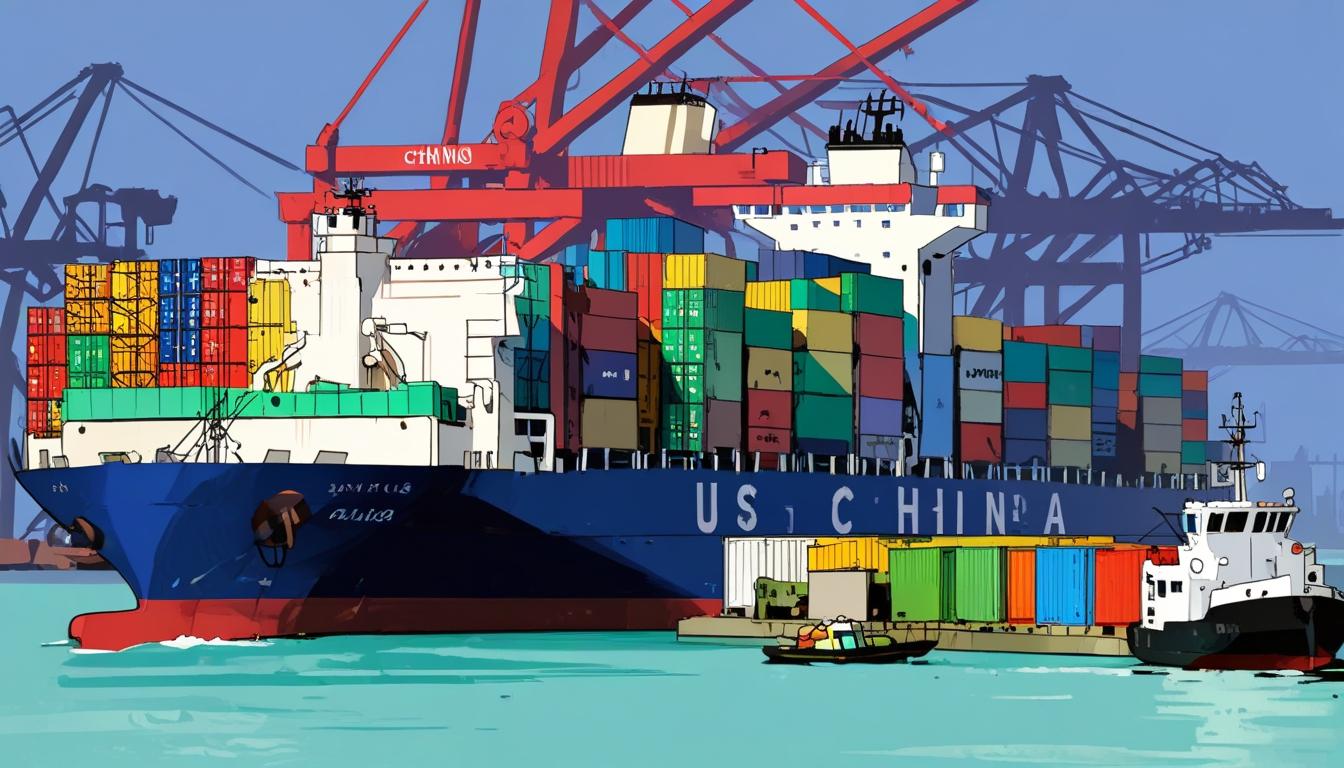Container shipping between China and the United States is experiencing unprecedented disruption following the imposition of new tariffs by the Trump administration on U.S. imports from China. Industry leaders are warning that the resulting supply chain impacts and economic consequences could be as significant as those seen during the COVID-19 pandemic.
The tariffs, which came into effect on 9 April, established rates at 145% for goods originating from China and 10% for products from other locations. This move has triggered a steep decline in ocean container bookings from China to the U.S., which Ryan Peterson, Founder and CEO of Flexport, reports has fallen by more than 60% within just three weeks of the tariffs taking effect.
John McCown, a recognised expert in container shipping, highlighted that in March, China accounted for roughly 40% of inbound containers to the U.S. He explained that the full impact of the tariffs would be felt by U.S. ports starting in May for the West Coast and by June for those on the East and Gulf Coasts, due to the loading cutoff dates at Chinese origin ports.
Adding to the complexity is a forthcoming fee plan scheduled by the U.S. Trade Representative (USTR) for October. This plan will impose new charges on containerships operating U.S. voyages if they are carried by Chinese operators or vessels built in China.
“It is a fair statement to say that the container shipping sector has never faced the sort of macro headwinds that it is now facing,” McCown remarked. His comments come amid significant industry responses, including the cancellation of 81 sailings for April in the transpacific trade lane—surpassing the 51 cancellations recorded at the height of the pandemic. Reports also indicate sharp reductions in container loads: a 28% decrease on Asia to West Coast routes and 42% on routes to the East Coast.
Hapag-Lloyd, one of the world’s major shipping companies, has stated that approximately 30% of shipments from China to the U.S. have been cancelled. The company noted a concurrent “massive increase” in demand from Southeast Asian countries such as Thailand, Cambodia, and Vietnam, suggesting some diversion of trade flows.
Economic implications of the disruption have also been a focus of concern. Peterson emphasised that the U.S. imports around $600 billion worth of goods annually from China, 95% of which is transported by ocean freight. These goods retail at roughly $2 trillion within the U.S. market. He warned of potential mass shortages emerging this summer as freight arrivals decline.
Craig Fuller, CEO and Founder of FreightWaves, underscored the possible timing of these shortages. Speaking on the social media platform X, he pointed out that the back-to-school season, which heavily relies on goods shipped from overseas during the summer months, could be affected. “No one is thinking about back to school, but this is the season when they are being shipped from overseas. Might want to load up early,” Fuller said, anticipating that August could witness the first significant product shortages.
Peterson also indicated a risk of a “bullwhip effect” in the market should tariffs be suddenly relaxed. With vessels already being repositioned to other trade lanes due to the cancellations, the sector might face difficulties accommodating a surge in rebookings. He predicted that container shipping rates could soar to levels seen during the peak of the pandemic crisis in 2021-22, when prices approached nearly $20,000 per container from China to the U.S.
Further pressure may be placed on the air freight industry as well. Peterson noted that a mere 1% shift of ocean freight volumes to air freight could drive air freight prices back above $10 per kilo, recapturing the high levels experienced during COVID-19.
The current disruption is regarded by some within the shipping industry as the most severe challenge ever faced by container shipping, rivaling the effects of the global pandemic. It has far-reaching consequences beyond U.S.-China trade, affecting global shipping lanes and raising concerns among market analysts.
In his remarks on social media, Fuller expressed frustration with the ongoing tariff situation, observing, “The economy has COVID, except there is no PPP or stimulus coming. The only cure is a deescalation of the tariffs.”
McCown emphasised the critical importance of stability within the container shipping system. He stated, “Container shipping operates most efficiently with consistent rhythm. Anything that disturbs that equilibrium injects inefficiency and unnecessary costs into those systems. Unfortunately, many of the actions that have already occurred have disturbed that equilibrium and injected uncertainty and even chaos in that system.” He noted that it remains unclear how the situation will ultimately unfold regarding container volume and inflationary pressures.
While former President Donald Trump has suggested the possibility of reducing the tariff rates from the current 145%, key industry figures are calling for swift action to mitigate further supply chain disruption. Fuller concluded with a note of urgency: “Still time to avoid a crisis, but the clock is running out.”
Source: Noah Wire Services
